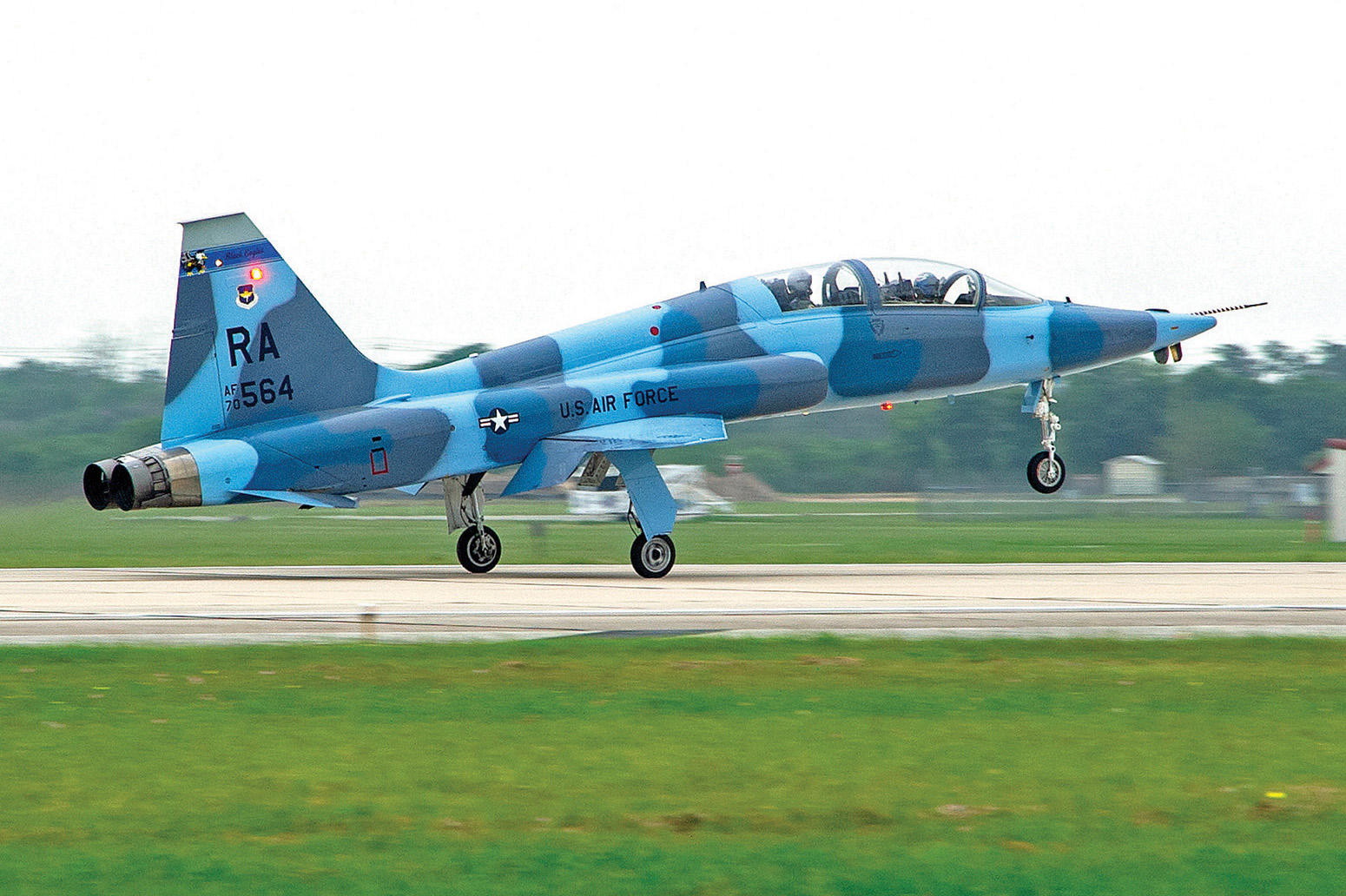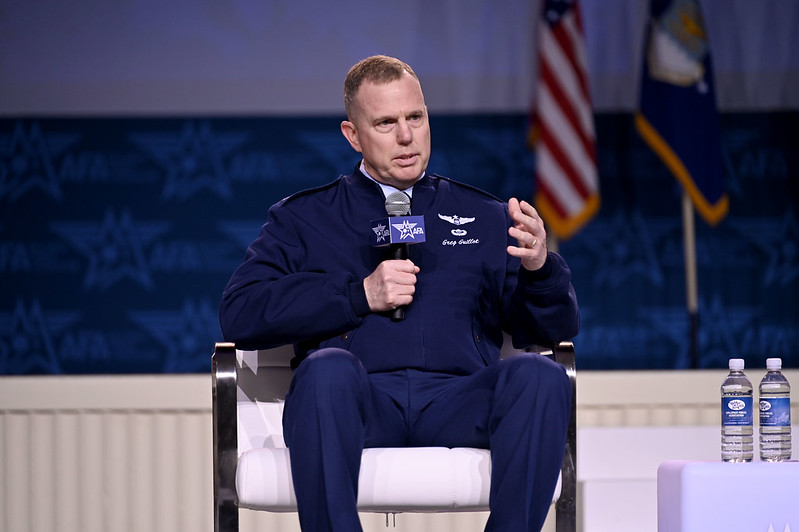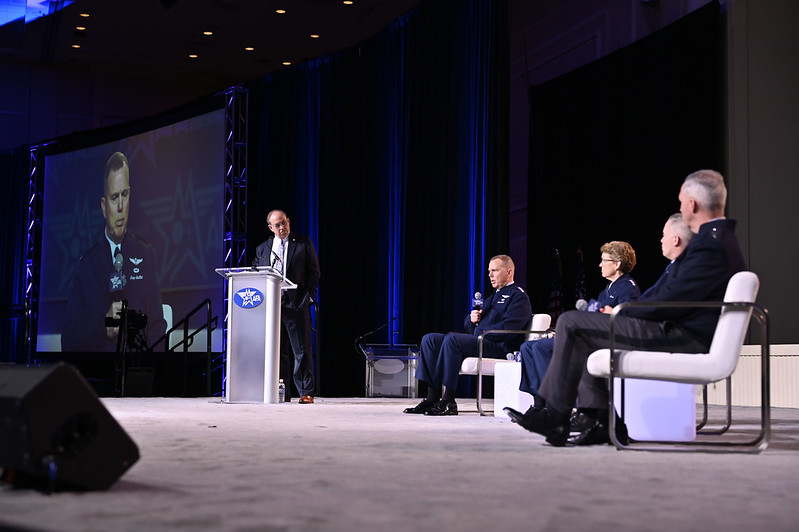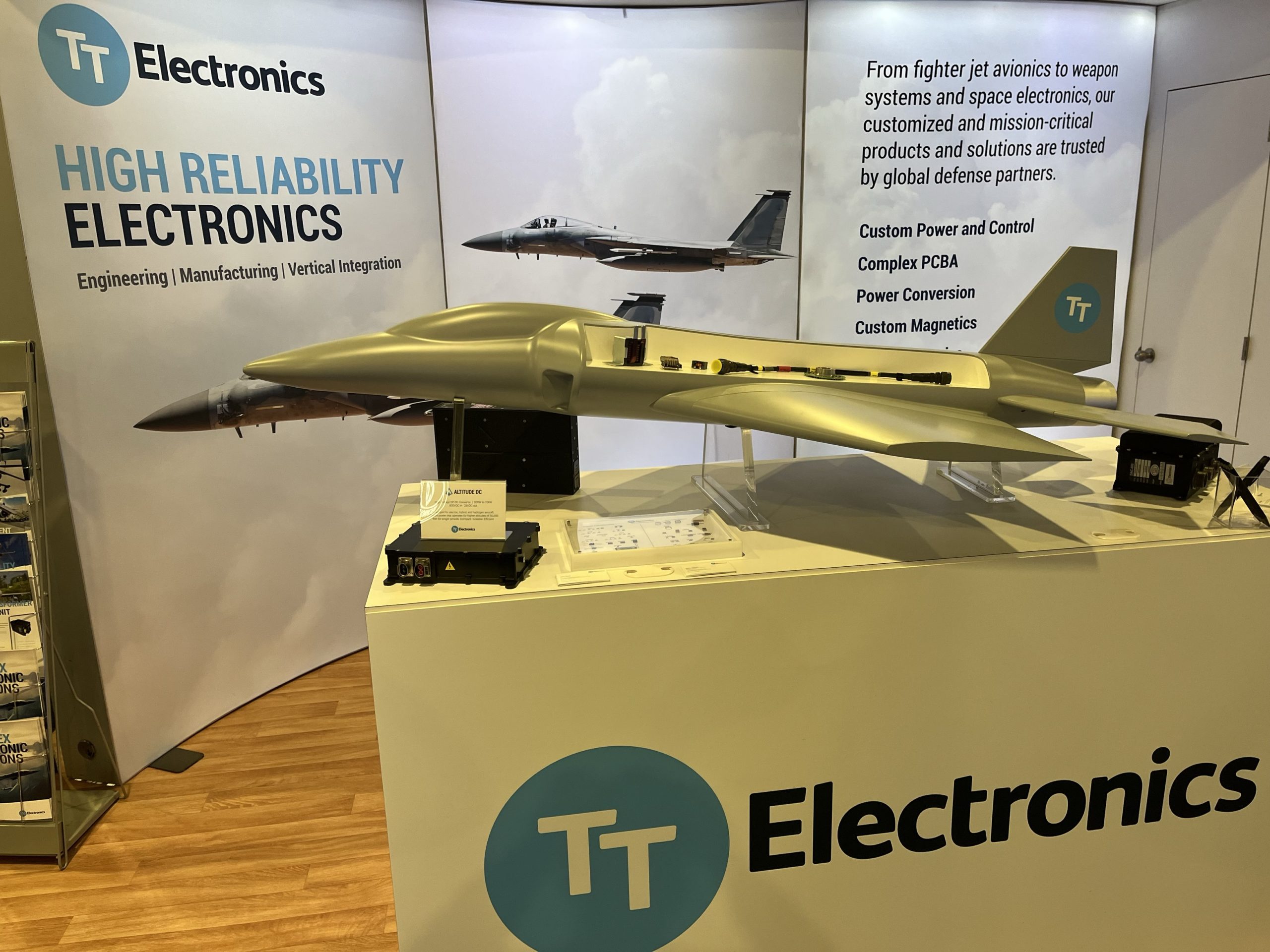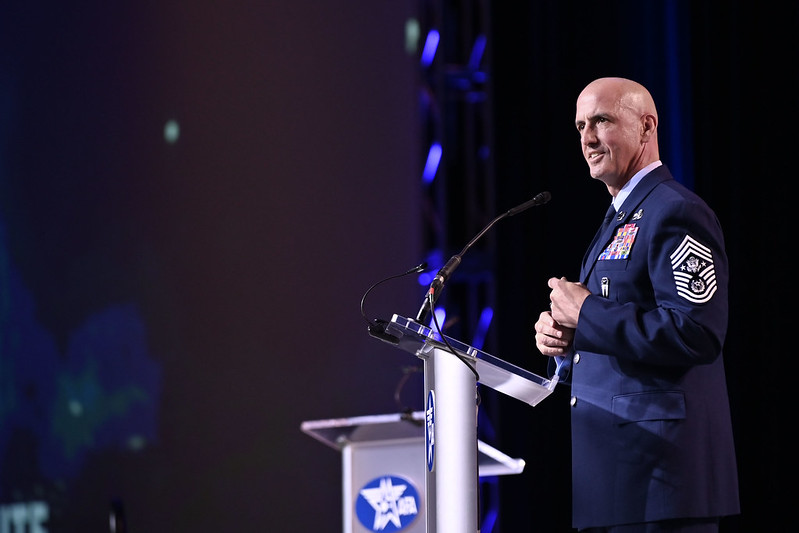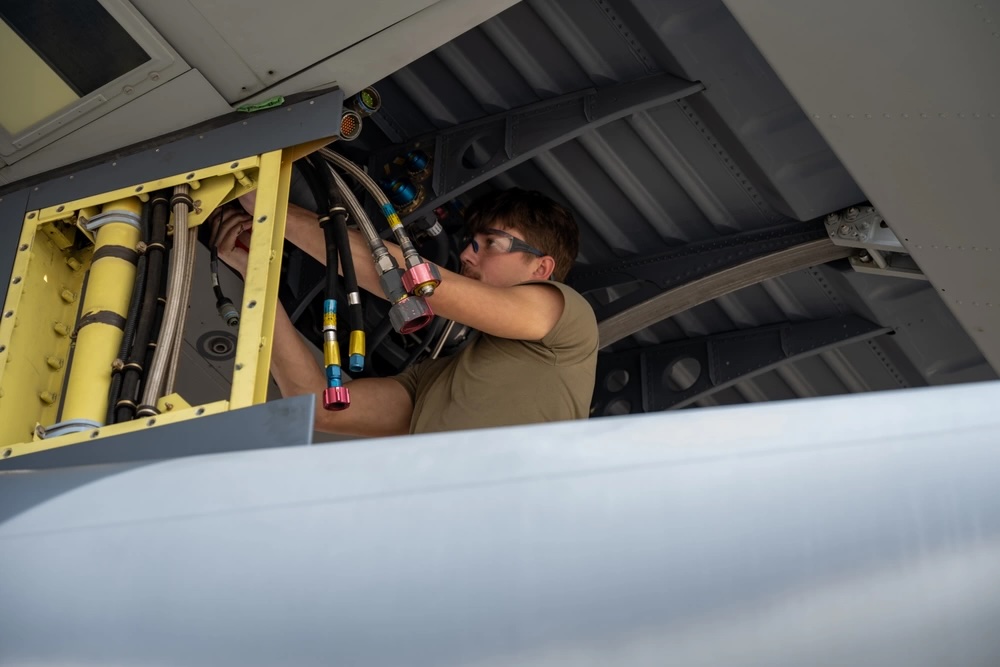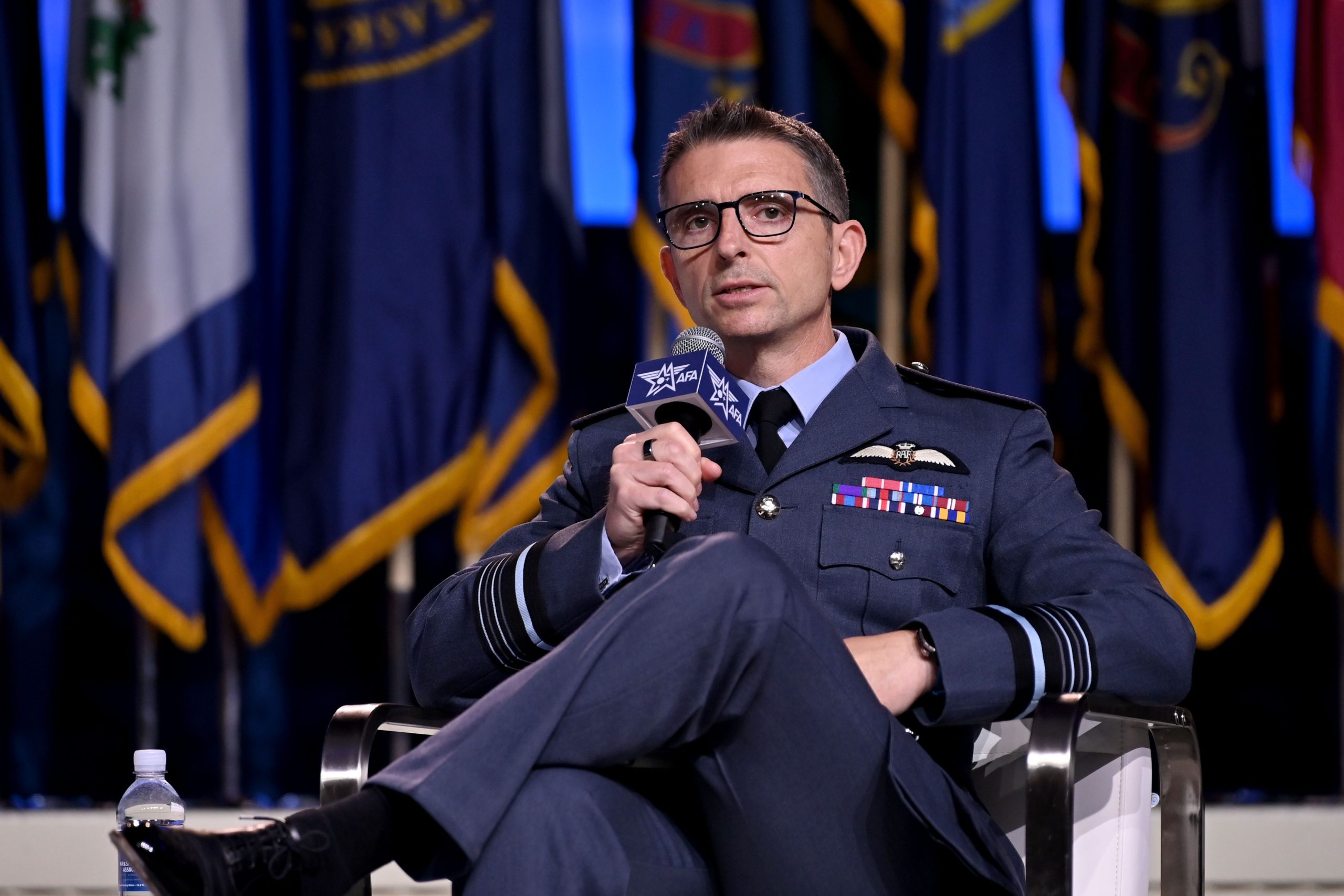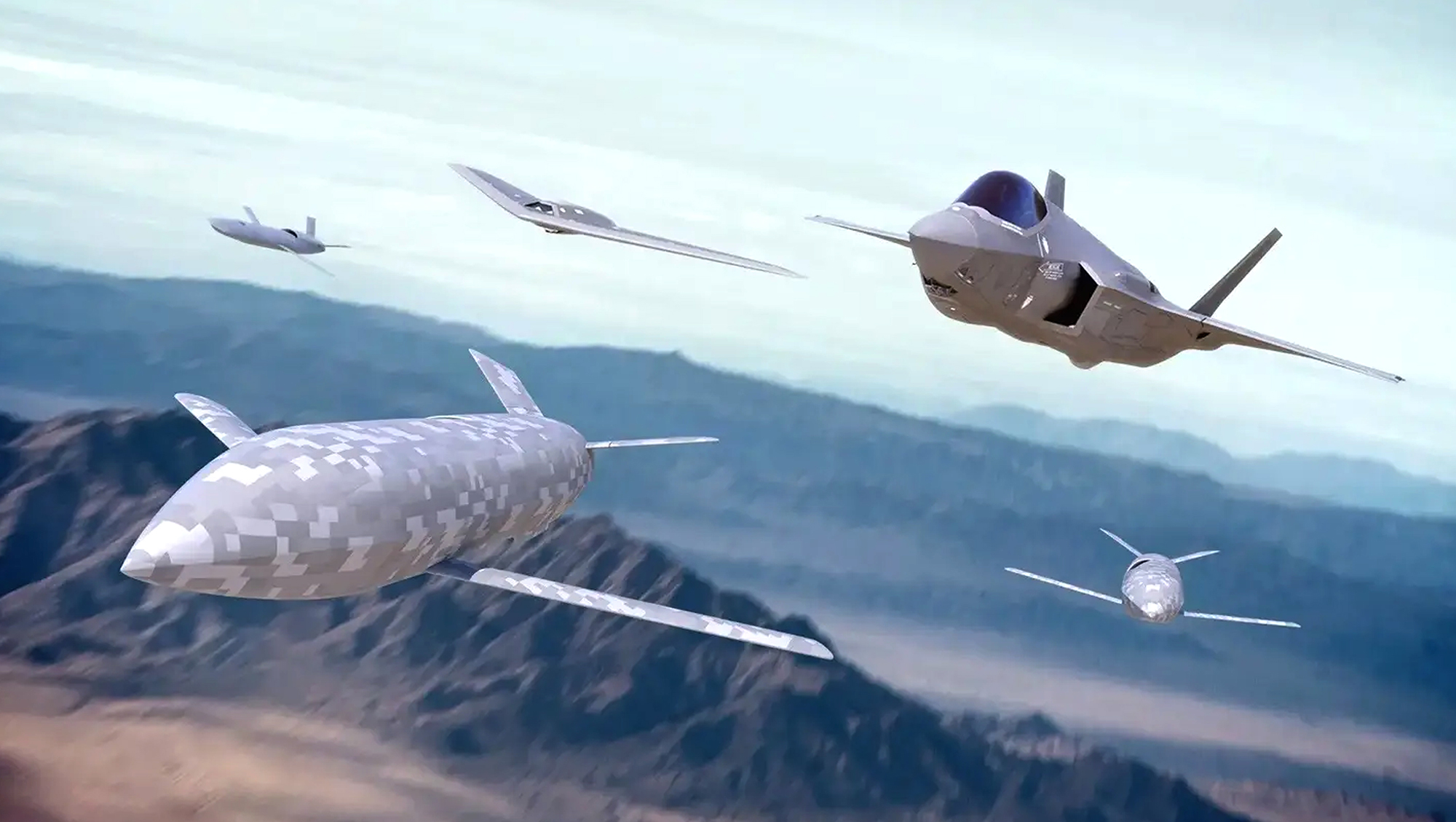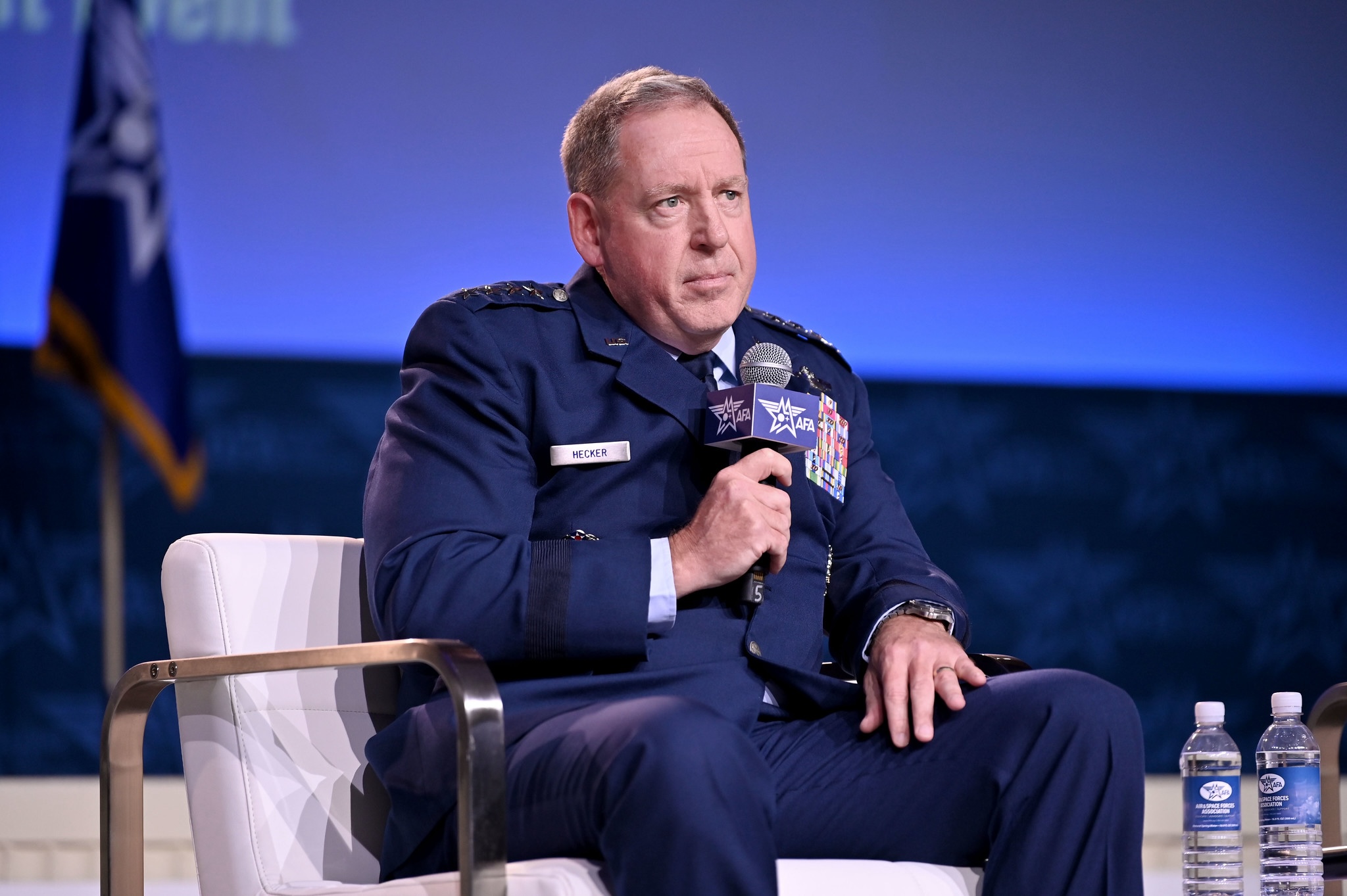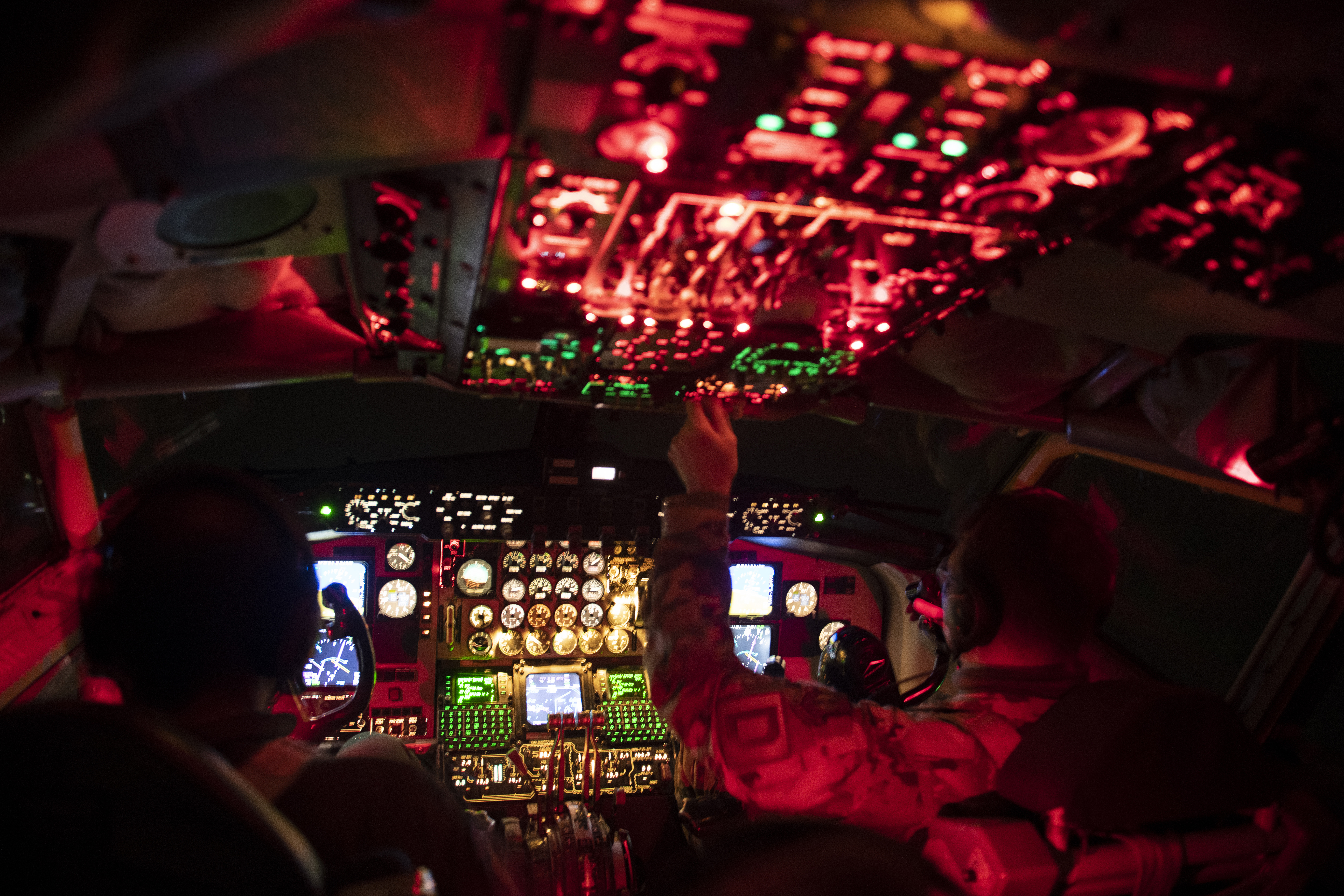NATIONAL HARBOR, Md.—Air Force leaders said Sept. 17 they plan to take a ‘holistic” and “system of systems” approach to close the service’s chronic, seemingly intractable pilot shortage, rather than the patchwork of individual good ideas tried over the last several decades.
Dating back to the 1990s, the service has consistently dealt with pilot shortage problems. In that time, officials have trotted out a wide variety of potential fixes—bonuses, an air mobility track, fighter fundamentals, simulators, a civilian path to wings, an accelerated path to wings.
They’ve also gone deep trying to understand the “second- and third- order effects from a pilot production and absorption [and] retention perspective,” retired Gen. Jeffrey Harrigian said during a panel discussion at AFA’s Air, Space & Cyber Conference.
Yet despite all that effort to produce more pilots, the end result has generally been the same, said Lt. Gen. Adrian L. Spain, deputy chief of staff for operations: around 1,300 new pilots per year, well short of the service’s long-term goal of 1,500.
“We’ve tried many, many ways to go above that. … We’ve really stretched ourselves and gotten to over 1,400 but we haven’t really gotten to 1,500 ever,” said Spain.
“The expectation was that we would gain 200 to 250 additional pilots per year using those initiatives. The problem is, they were offset” by the unforeseen.
Those unanticipated problems included freak weather events, supply constraints, and problems keeping aging training aircraft going. There were self-inflicted wounds as well, Spain said, when the Air Force deliberately “took risk” in funding some accounts, like spares, to maintain combat readiness elsewhere.
“The effect of that was, we didn’t get better,” Spain said. “We stayed at exactly about the same level: 1,300 plus or minus. So those initiatives worked; they just kept [the shortage] from getting worse.‘”
Moving forward, Spain and Lt. Gen. Brian Robinson, commander of Air Education and Training Command said the Air Force cannot expect standalone initiatives to close the gap.
“Solving one element of it doesn’t solve the problem,” Spain said. “You have to actually tackle all of the things that contribute to it to get to a holistic solution, and that’s what we’re really trying to work on now: how do we look at this problem from all of the angles…and ensure that the solutions that we’re implementing are actually holistic.”
Robinson described the process as thinking about pilot production as a “system of systems.”
“We’re working really hard, as a foundational aspect, to be able to understand the system of systems digitally, and we can work with the myriad of variables that exist,’ Robinson said. “And by the way, inside each one of those segments is another set of systems of systems: logistics, supply, manpower decisions, airspace access, air traffic controllers at some of our bases.”
Applying artificial intelligence and digital methods to wring more efficiency out of each element will collectively nudge the numbers higher, Robinson said.
“Some might call it a ‘digital twin,’” Robinson said, comparing the system to a digital model of an aircraft where designers can tweak variables and get instant feedback.
“But it’s got to be sustainable,” he added. “I don’t want Airmen working 70 or 80 hours a week trying to achieve” the aircraft readiness rates needed to smooth out pilot flow, he said.
As an example, Robinson described an initiative to increase the T-6 part of pilot training, which leads to better results down the line.
“We’re now scaling that approach out to Columbus Air Force Base now and … after that, we’ll take a look at applicability at Vance Air Force Base. But year over year, with what we’ve done—and this is where it comes back to the system of systems—by increasing the T-6 phase across AETC” will result in about 111 [additional] pilots getting their wings,” he said.
The problem is also not consistent between weapon systems. Spain said an F-35 pilot recently asked him “what pilot shortage?” because at his location, the recent long pause in F-35 deliveries had created a surplus of pilots to fly the number of jets available.
“That [unit] was overmanned because we had delayed deliveries, and so they had 130%” of the pilots needed,” Spain said.
The differences between systems has also come up because the Air Force recently had to divert top flight school graduates—who usually get their assignment choice—away from fighters to other aircraft, such as C-130s, because fighter Flying Training Units couldn’t absorb them without causing other problems.
The action is meant to “smooth out bulges in the system,” Spain said.
As things stood, Robinson added, pilots were waiting a year to advance to the next phase of training, instead of three to five months.
While the move has met with some complaints from graduates who expected to go to fighters and were either redirected to “heavies” or as instructors, Spain said that pilots need to remember that the needs of the service come first.
The Air Force also needs to “de-stigmatize” pilots going into the Guard and Reserve, said Maj. Gen. Randal K. Efferson, acting commander of the Air National Guard Readiness Center.
“You can have a really good career” in the Air National Guard, he said, but panelists agreed that even discussing leaving Active Duty to pursue flying in the reserve components drew frequent criticism from commanders and fellow pilots, a cultural problem that needs to be fixed.
